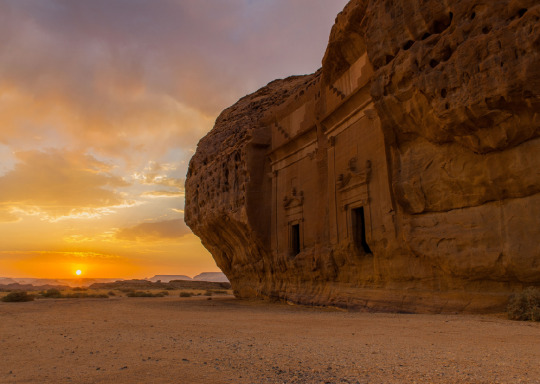
The once-prosperous Arabian trading hub of Hegra (also known as Madain Saleh) has been abandoned and virtually untouched for the past 2,000 years. You might notice that it looks remarkably similar to another rock-cut city of Petra. That’s because they were part of the same Nabataean kingdom. Petra was its main city and capital, and Hegra was its second most important city, its southern trading city.
The Nabataeans were desert nomads who leveraged their importance in trading routes to eventually control the incense and spice trade routes through Arabia and Jordan to the Mediterranean, Egypt, Syria and Mesopotamia. The Nabataeans used their wealth to build stupendous rock-cut buildings and tombs. Unfortunately they were an illiterate people. We have occasional comments on them from their literate neighbors, and scanty archaeological investigations. But we simply do not know that much about the mysterious people who built Hegra and Petra.From the 300s BCE to the 1st century CE, the Nabataeans remained wealthy and powerful in their desert kingdom, until the expanding Roman Empire annexed the kingdom and took over their trading routes.
Saudi Arabia recently opened Hegra to tourists as part of the country’s efforts to diversify its oil-focused economy, and since Petra sees nearly a million visitors a year, Saudi Arabia was clearly hoping Hegra will become a similar draw.
Nenhum comentário:
Postar um comentário